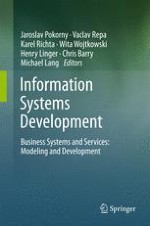2011 | OriginalPaper | Chapter
Using Agile Practices to Build Trust in an Agile Team: A Case Study
Authors : Orla McHugh, Kieran Conboy, Michael Lang
Published in: Information Systems Development
Publisher: Springer New York
Activate our intelligent search to find suitable subject content or patents.
Select sections of text to find matching patents with Artificial Intelligence. powered by
Select sections of text to find additional relevant content using AI-assisted search. powered by
